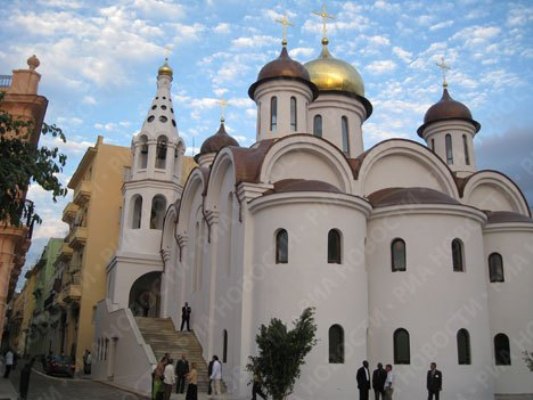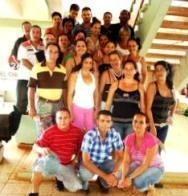A symbol of those ties is Our Lady of Kazan Orthodox Cathedral located in the colonial section of Havana, a monument to the friendship relations between Cuba and Russia.
First of its type in Latin America, the architecture of the temple stands out in the area for its Byzantine style, with five domes representing Christ and the four evangelists.
Its construction was approved in 2001 and among its main promoters was the leader of the Cuban Revolution, Fidel Castro.
Three years later, Kirill, then President of the Ecclesiastic Foreign Relations Department of the Patriarch of Moscow assisted in the ceremony in which the first stone of the Cathedral was placed and in 2008 offered the Devine Liturgy of Consecration with the presence of Cuban President Raul Castro.
The construction of this temple in Cuba is proof of our Revolution’s respect for one of the main principles of human rights in compliance with the profound and radical Socialist Revolution, according to a text by Fidel Castro when writing on the event.
There was the existence of an orthodox community in Cuba in the early 20th century made up by Greek, Russian and other Slavic immigrants which received legal recognition in 1964 as the Cuban Christian Orthodox Association which self-dissolved 14 years later.
In 1971, a Cuban deacon was ordained Priest by the then Archbishop Jarkov and Exarca of the Russian Orthodox Church of the Patriarch of Moscow in Central and South America.
In the 1990’s loyal Russian orthodox and from other Slavic lands began to reorganize the religious community mainly made up of descendants, diplomats or citizens that had settled in Cuba assisted by the Patriarch of Moscow and all of Russia.
According to the Byzantine ritual, Russia was Christianized in the year 988 and although new religious organizations appeared the majority of the population practice the Orthodox faith.
In 1988 Russia celebrated the first millennium of its baptism and in 2007 the Russian Orthodox Church outside the country was uninvited with the Patriarch of Moscow.
According to reports published on Internet, as other autocephalous orthodox patriarchs, independent of all religious authority, Russia’s has the power to canonize, prior notification, other sister churches regarding changes to its saints.
They also consider their own, the saints in existence before the so called East to West Schism (1054), when the separation of the Catholic and Orthodox Churches was formalized.
Among the main characteristics of the orthodox faith is the richness of its hymns and the general acceptance of the icon as a picturesque piece.
The Orthodox Church, including Russia, currently has 9 Patriarchs (Ecumenical of Constantinople, Alexandra, Antioquia, Jerusalem, Serbia, Rumania, Bulgaria and Georgia).



